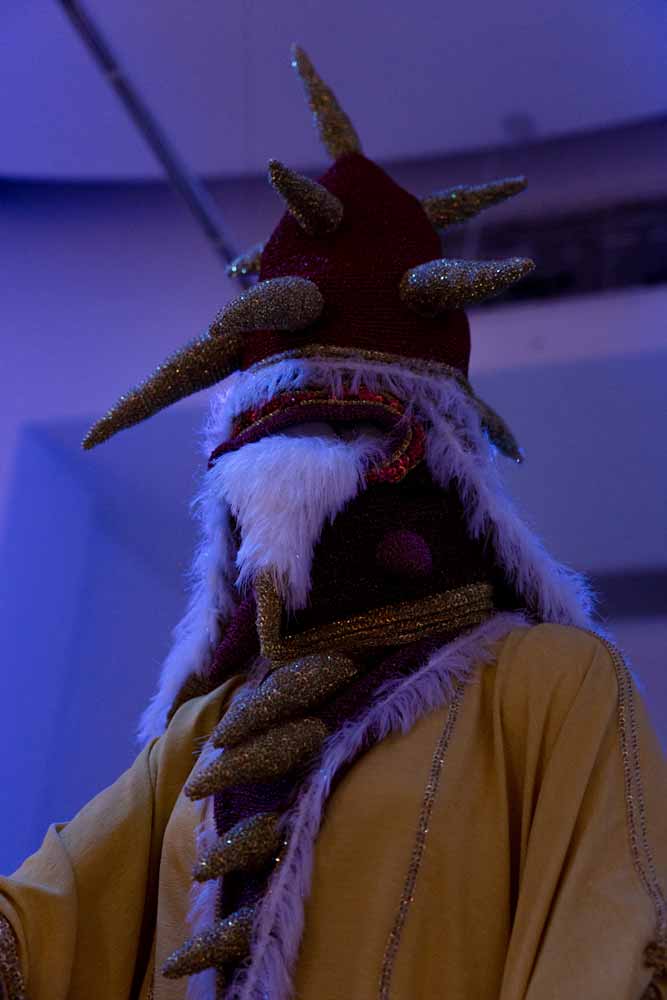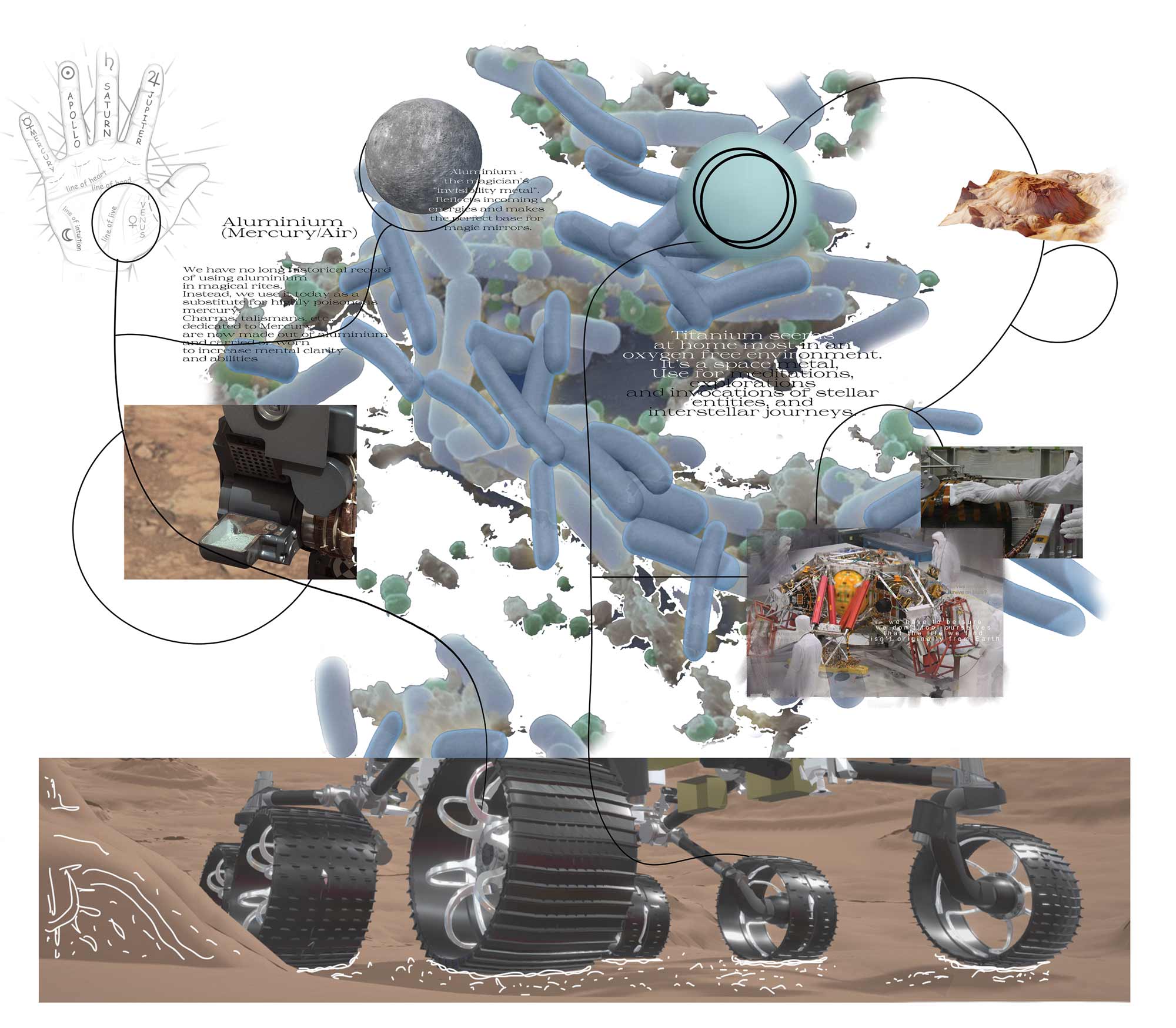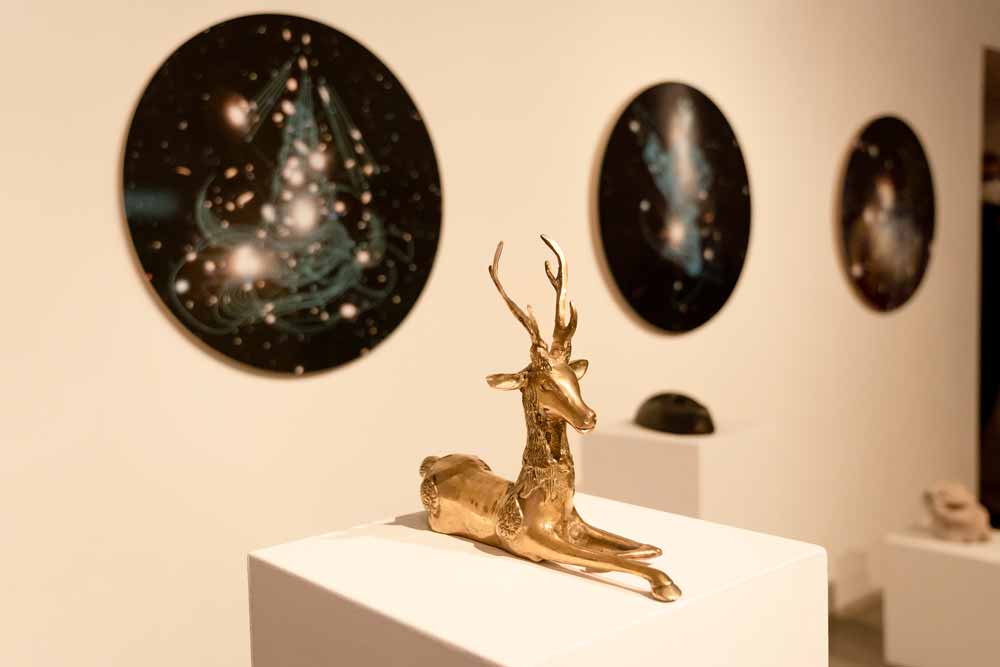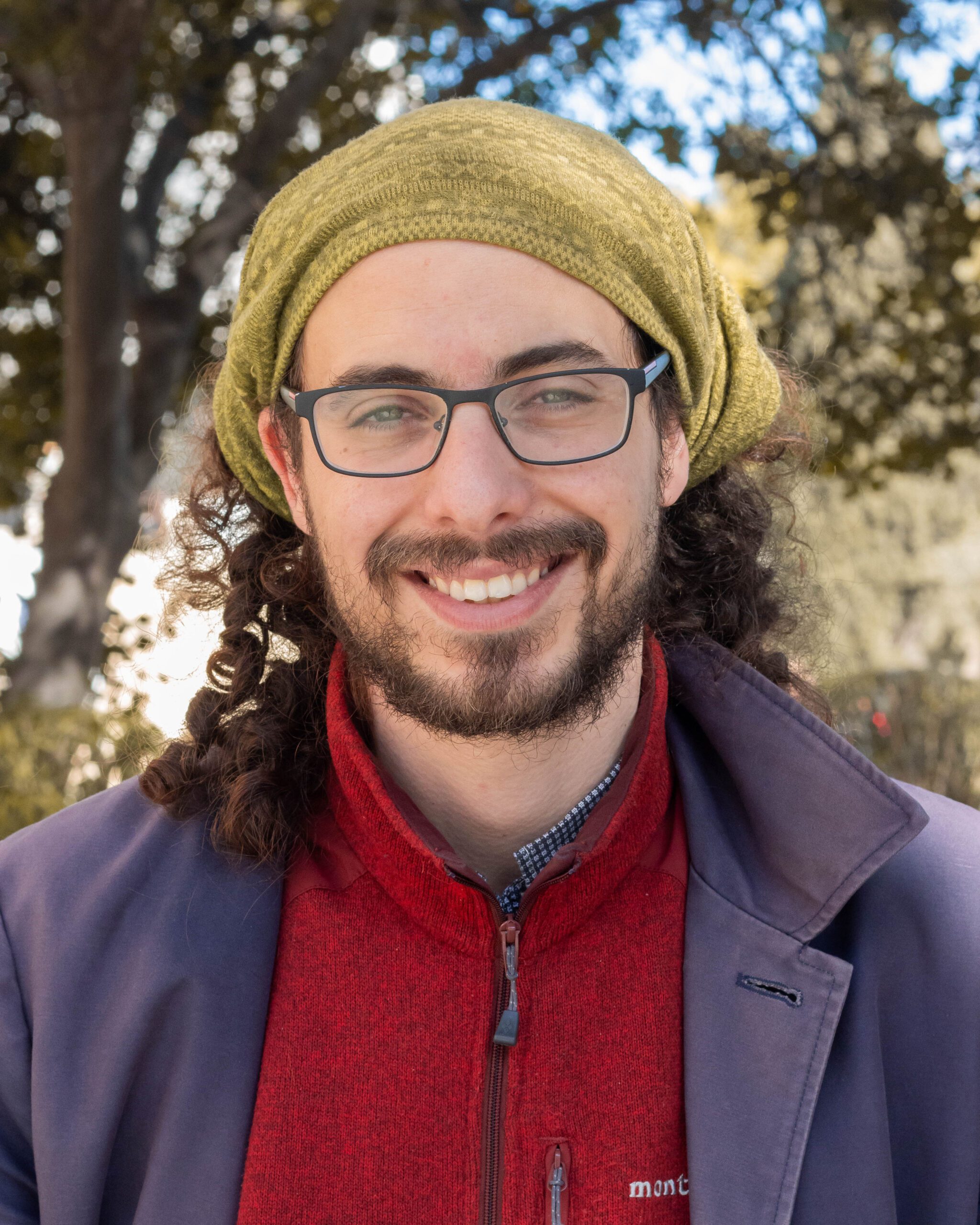What would the world look like if humans went extinct? What would remain of our once-great civilization? These questions have inspired a group of artists to host Such Stuff as Worlds are Made On at Spazzju Kreattiv. It combines the esoteric and the scientific to seek a deeper understanding of our origins and develop long-term, evolutionary perspectives.
The exhibition invites us to tweak our mindset, suspend belief, and open our eyes to a new way of seeing the world. The artists explore an inclusive future, one which goes beyond human timescales, by looking back to imagine the birth and death of planets while speculating on how future worlds might be created.
Babel on Babalon
As soon as I walk into the exhibition, my gaze is arrested by five figures. The bishops look like a combination of Greek Orthodox priests and Mongolian shamans. Their attire is lavish, flowing, and regal, yet it would be hard to call them human. Four of these figures have alien appendages coming out of their heads, giving them an intimidating and extra-terrestrial look. A video plays in the background, showing these five figures, whom I later discover are in fact gods, conducting a mystical ritual to open portals of some kind. For artist Kornelia Remø Klokk, these figures stand between two worlds, the material and the digital, to create a fictional reality, GOLD-NR34LM. For each of these gods, their lifeforce lies in precious gold – perhaps their portals can help them in their quest for the precious metal?

A beautifully woven tapestry hangs on the wall behind the idols. Its abstract shapes remind me of a colourful QR code, which leads one to wonder – what will life in the far future make of our digital tapestries? How will they interpret our culture, our uniforms, or our traditions?
Life on Mars might not want to be found
For one artist, Letta Shtohryn, the answer lies not in the future, but in the past and how we interpret the relics of ancient civilizations. Tucked away in a room filled with large screens and a projector, is an image of a 6-fingered hand print. The print was allegedly found by AJ Agius in the late 1950s, at the entrance to the Decorated Room in the Hypogeum. Heritage Malta archaeologists have clearly stated that the carving is not to be found at the Hypogeum. This has only fueled further speculation. Was there an actual handprint? Or did it appear for a brief window only to disappear again?
Using this as her starting point, Shtohryn goes on to imagine what life forms we might find on Mars. She explains how our current attempts to explore the red planet are ‘mostly resource-extracting opportunities’ and merely an extension of human-centric thinking. In fact it is possible that we may have already contaminated the surface of Mars through our exploration.

To illustrate this, the artist prepared Seems at Home, an image of a 3d model of the Mars Rover (focusing specifically on the materials it is made from: titanium and aluminium) and interpreted them using the chart of planetary magical metal correspondences. It suggests ‘a kind of alchemy where chance, together with the alignment of planets and metals, might play a role in life evolving.’ The artist points to the bacterium Bacillus pumilus SAFR-032, which is capable of withstanding extremely hostile environments, and could in theory survive a trip to Mars and propagate. This marriage of the empirical and the magical is at the heart of the exhibition, demonstrating how these two schools of thought are not necessarily opposed.
Terra Nullius
With my head still amongst the stars, I wander into one of the next rooms and find myself facing 5 circles hanging from the wall. Each of these circles features what I assume to be galaxies, and in front of each of these circles is a plinth. These plinths each have a small figure: a golden elk, a wooden mask, or a figure of a deer. They stand guarding the galaxies, like a tiny relic of the civilization from that constellation in some alien museum.
Antje Liemann, the artist behind this installation, explains how according to the Hubble Space Telescope, the Milky Way and Andromeda (the nearest large galaxy to the Milky Way) will merge in the next 4 billion years. This led her to wonder how this cataclysmic event could change our night sky.

Liemann also goes on to explain how the title of the installation (Terra Nullius) translates to ‘nobody’s land.’ In humanity’s attempt to colonise space, we act as though the galaxies belong to no-one. It is this neo-colonial attitude that the exhibition tries to tackle, pointing out how our collective ambitions of conquering the final frontier lie in the hands of a small number of billionaires.
In fact, the entire exhibition explores what the future would look like (for those that remain) through speculative art practises and world-building. It invites us to shift our perspective, to not think in anthropocentric ways, but to consider the perspective of non-privileged humans, non-humans, biomes, and martians. The result is a fantastical re-imagining of the cosmos!
The layout of the exhibition feels like a treasure hunt; each installation leads to another, and you find yourself piecing clues together in a visual stream of consciousness. It will direct your train of thought, from myths and the Hypogeum to posthumanist speculation and life on Mars!
Such Stuff as Worlds are Made On runs from the 21st of January till the 20th of February at Spazzju Kreattiv. Not only is it free to the public, but the artists regularly host curatorial tours to help enrich your experience. If you can make one of the curatorial tours, you’ll be able to meet some of the artists behind the exhibition and hear their stories behind the art! The exhibition will also host Maja Renn’s Dreaming Workshop; full details can be found below.
Details:
Friday 11 February, 6pm – 9pm VR tour and curatorial tour
Saturday 12 February, 2pm – 6pm VR tour and curatorial tour
Friday 18 February, 7pm – 9pm VR tour and curatorial tour
Saturday 19 February, 2 – 5pm VR tour and curatorial tour
Dreaming workshop
Saturday 12th of February (ZOOM) – 19:30 – 21:00
Tuesday 15th February 2022 (Spazju Kreattiv) – 13:00 – 16:00
Thursday 17th February 2022 (Spazju Kreattiv) – 18:00 – 21:00
Video screening satellite event
Friday 11 February 2pm-5pm
Saturday 12 February, 2pm – 5pm
Sunday 13 February, 2pm – 5pm
This project is supported by Arts Council Malta.






Comments are closed for this article!